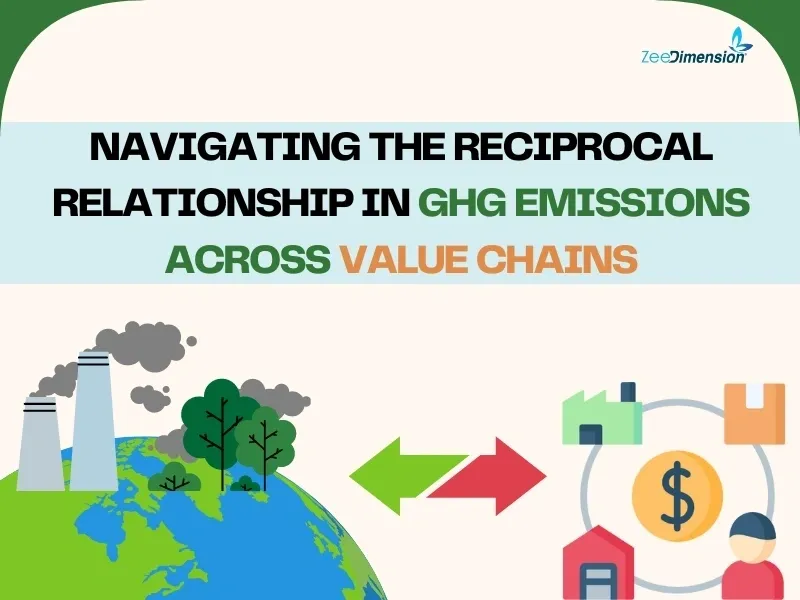
Exploring how companies’ Scope 1 and Scope 2 emissions influence the Scope 3 emissions of others in a value chain.
In today’s climate-conscious world, understanding GHG emissions is crucial. Emissions are divided into three scopes:
-
Scope 1: Direct emissions.
-
Scope 2: Indirect emissions from purchased energy.
-
Scope 3: Indirect emissions across the value chain.
Let’s dive into how these are interconnected.
Slide 3: General Formula
For any company j, their Scope 3 emissions Ej3 are influenced by the Scope 1 and Scope 2 emissions from all other companies in the value chain:
📷
This formula highlights the reciprocal nature of emissions within a network of companies.
Numerical Example
Consider a value chain with three companies: A, B, and C.
-
Company A: Scope 1 = 100 tons, Scope 2 = 200 tons.
-
Company B: Scope 1 = 150 tons, Scope 2 = 100 tons.
-
Company C: Scope 1 = 200 tons, Scope 2 = 150 tons.
Calculating Scope 3 Emissions
- Company A’s Scope 3:
EA3=(150+100)+(200+150)=600
- Company B’s Scope 3:
EB3=(100+200)+(200+150)=650
- Company C’s Scope 3:
EC3=(100+200)+(150+100)=550
Discussion
This example shows how intertwined emissions are in a value chain. Each company’s Scope 3 emissions are impacted by the Scope 1 and 2 emissions of others. Collaborative efforts to reduce emissions benefit the entire network.
📷
Conclusion
A reciprocal relationship in GHG emissions requires companies to consider their broader impact. By understanding and reducing Scope 1 and 2 emissions, organizations can drive significant reductions in Scope 3 emissions across the value chain.
Call to Action
Ready to optimize your sustainability strategy?
Collaborate with your value chain partners to reduce emissions and create a more sustainable future together!
🎞️ 𝑭𝒐𝒓 𝒎𝒐𝒓𝒆 𝒅𝒆𝒕𝒂𝒊𝒍𝒔 𝒂𝒏𝒅 𝒊𝒏𝒇𝒐𝒓𝒎𝒂𝒕𝒊𝒐𝒏, 𝒇𝒐𝒍𝒍𝒐𝒘 𝒖𝒔 𝒐𝒏 𝒀𝒐𝒖𝑻𝒖𝒃𝒆 𝒂𝒏𝒅 𝒘𝒂𝒕𝒄𝒉 𝒎𝒐𝒓𝒆:







